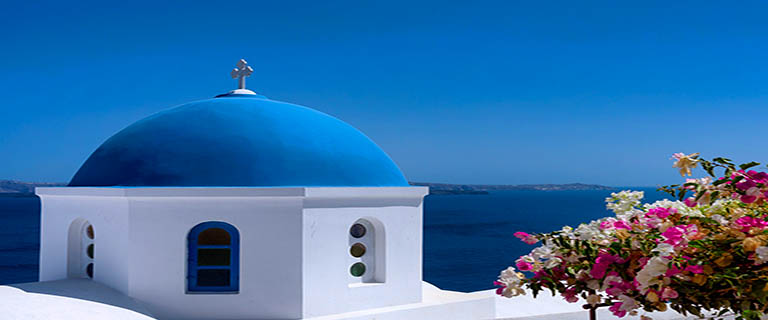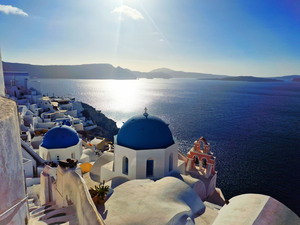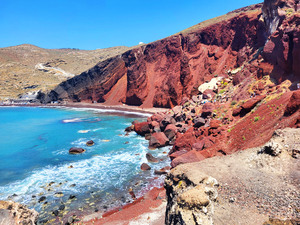- 1,169Excursions
- 109,501Reviews
- Help Center
Fira (ancient Thira), is the name of the main city on the island of Santorini. It cascades down the side of a cliff more than 1300 feet above the water (caldera) below.
Excavations have found signs of human settlement on the island dating back to the 4th century BC but it is the period from 2000 and 1650 BC that holds the most remains. The town of Akrotiri appears to have been a major port during the Bronze Age. Recovered artifacts from Akrotiri include items from Crete, Anatolia, Cyprus and the Greek mainland. The construction included multi-level buildings, streets, stairs, squares and even plumbing for hot and cold running water. Somewhere between 1650 and 1450 BC, one of the greatest volcanic eruptions on earth took place causing over 60% of the island to collapse into the sea. Santorini is one of the most stunning destinations in the Mediterranean, and the cruise port offers a variety of experiences for visitors.
Historic highlights of the island include the ruins of Akrotiri, which are the most famous, most excavated and most crowded. The ruins of Thira are less excavated and less crowded due to the steep climb required to reach them. For history buffs, it is worth the hike. Remains of four of the 1400 AD settlements are still visible at Oia, Pyrgos, Emporio, and Akrotiri. The two most important museums on the island are the Museum of prehistoric Thira, which houses artifacts from Akrotiri, and the Archeological Museum of Santorini which houses artifacts from all the other excavations on the island.




